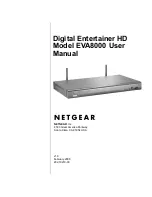
Dial Protocol window
82
Model LRA2900A RAS Administrators’ Reference Guide
7 • Dial In
•
Authenticating—The access server is in the process of verifying the user’s password by using static or
RADIUS authentication.
•
Online—The access server has completed authentication and the user is now able to access the Internet.
•
12tpTunneled—Subsequent multilink call that was answered by another access server and tunneled to the
access server that has the originating call.
•
Kill—The administrator can manually disconnect the user by activating this parameter.
•
Dead—The user’s call has been disconnected. This message disappears when the linger time expires.
•
Bury—The call has been killed and removed from the dial-in main window.
Protocol (diactProtocol)
Indicates the type of service or link being provided for this call.
•
PPP—The user has a PPP link running.
•
Slip—The user has a Slip link running
•
Telnet—The user has a telnet session running
•
Rlogin —The user has an rlogin session running
IP Address (diactIP)
The currently assigned IP address from the IP address pool or the RADIUS server. The remote users’ PC is
assigned to this address. The address appears in the IP address (0.0.0.0) format.
Port # on Remote Machine (diactPort)
The TCP port number being used by this connection. The range is from 0 to 65,535. Ports in the range of 0 to
1023 are well-known ports used to access standard services. Telnet uses port 23 and rlogin uses port 513.
Local MRU (diStatLocalMRU)
The current value of the MRU for the local PPP entity. This value is the MRU that the remote entity is using
when sending packets to the local PPP entity. This setting becomes active when the link is in the up—able to
pass packets—operational state (for more information, refer to “Operational Status (diIpOperStatus)” on
page 105).
Remote MRU (diStatRemoteMRU)
The current value of the MRU for the remote PPP entity. This value is the MRU that the local entity is using
when sending packets to the remote PPP entity. This setting becomes active when the link is in the up—able to
pass packets—operational state (for more information, refer to “Operational Status (diIpOperStatus)” on
page 105).
LCP Authentication (LCPAuthOptions)
Authentication type used by the dial-in user. The following options are available:
•
none(1)
•
pap(2)
•
chap(3)
Содержание LRA 2900
Страница 29: ...Contents Model LRA2900A RAS Administrators Reference Guide 29 ...
Страница 33: ...About this guide Model LRA2900A RAS Administrators Reference Guide 33 ...
Страница 37: ...1 Introduction Model LRA2900A RAS Administrators Reference Guide 37 Saving HTTP HTML Object Changes ...
Страница 42: ...42 Chapter 3 Import Export Chapter contents Introduction 43 Export Configuration 43 Import Configuration 45 ...
Страница 63: ...5 Authentication Model LRA2900A RAS Administrators Reference Guide 63 Modify Static User ...
Страница 72: ...72 Model LRA2900A RAS Administrators Reference Guide 7 Dial In ...
Страница 109: ...7 Dial In Model LRA2900A RAS Administrators Reference Guide 109 Dial In User Statistics window ...
Страница 125: ...8 Dial Out Model LRA2900A RAS Administrators Reference Guide 125 An example demonstrating how Dial Out is used ...
Страница 155: ...12 Filter IP Model LRA2900A RAS Administrators Reference Guide 155 An example of using a filter ...
Страница 201: ...16 MFR Version 2 Model LRA2900A RAS Administrators Reference Guide 201 ...
Страница 211: ...16 MFR Version 2 Model LRA2900A RAS Administrators Reference Guide 211 MFR Version 2 Modify ...
Страница 268: ...268 Chapter 22 About Chapter contents Introduction 269 Black Box contact information 269 ...
Страница 273: ...23 License Model LRA2900A RAS Administrators Reference Guide 273 End User License Agreement ...
Страница 278: ...278 Appendix B MIB trees Chapter contents Model LRA 2900 MIB Tree Structure 279 ...
















































